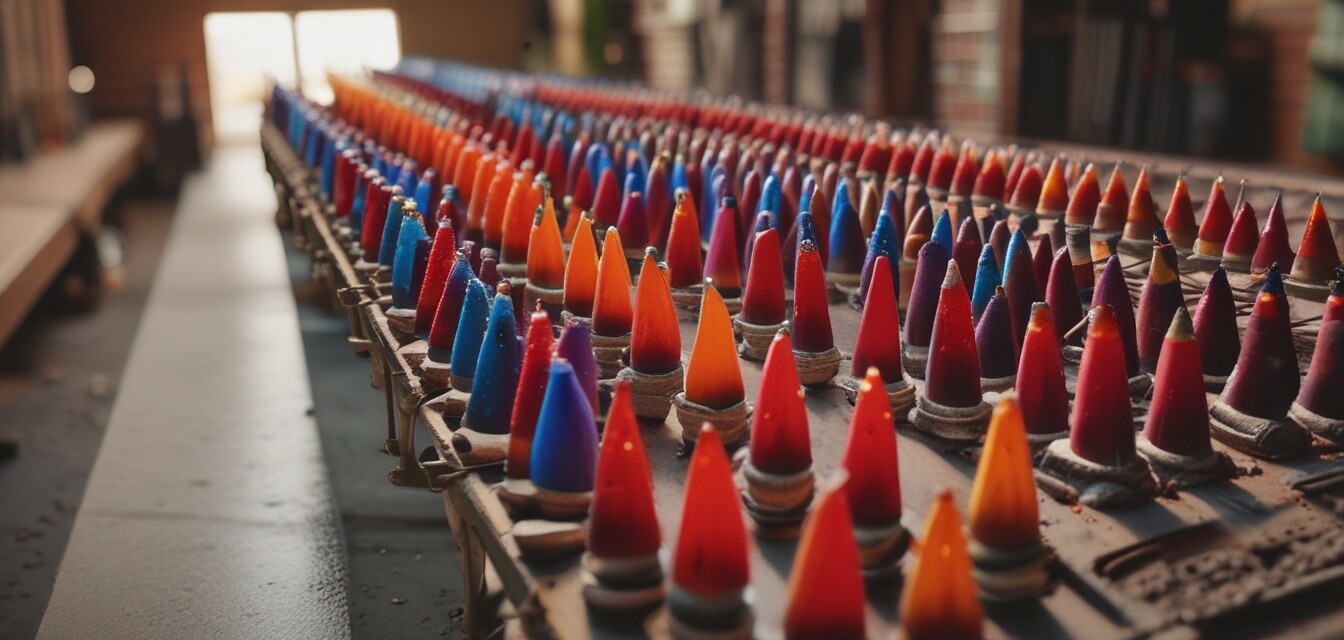
Using pyrometric cones for kiln firing precision
In the world of glass making, achieving the right temperature during firing is crucial to creating beautiful and durable pieces. Pyrometric cones are essential tools that assist artists in monitoring kiln temperature effectively. In this article, we will explore what pyrometric cones are, how they work, and how you can use them to ensure your kiln firing is precise.
Key Takeaways
- Pyrometric cones measure temperature through bending, indicating when specific temperatures are reached.
- They help avoid overfiring or underfiring, leading to better quality glass art.
- Different types of cones correspond to different temperature ranges, which should be selected based on the firing schedule.
- Understanding cone placement is essential for accurate temperature monitoring.
- Regularly replacing cones is necessary for maintaining accuracy in your firing process.
What Are Pyrometric Cones?
Pyrometric cones are small, triangular porcelain devices that are designed to melt and bend at specific temperatures. They have been used for many years in ceramics, glass making, and metalworking to gauge the heat work that materials have experienced inside a kiln. Each cone is labeled with a number indicating the temperature range at which it will deform, making them an essential part of kiln firing.
How Do Pyrometric Cones Work?
The effectiveness of pyrometric cones lies in their ability to indicate temperature through physical change. As the temperature inside the kiln rises, the cones begin to soften and eventually bend. The specific angle at which a cone bends corresponds to the temperature reached within the kiln. This allows artists to accurately measure the heat without relying solely on unreliable digital readings.
Different Types of Pyrometric Cones
Pyrometric cones come in various types and are categorized based on their temperature ranges. Below is a table summarizing the different ranges and their corresponding cone numbers:
| Cone Number | Temperature Range (°F) | Temperature Range (°C) |
|---|---|---|
| 022 | 1,000 - 1,020 | 538 - 549 |
| 010 | 1,400 - 1,420 | 760 - 771 |
| 04 | 1,670 - 1,690 | 910 - 923 |
| 6 | 1,830 - 1,850 | 999 - 1010 |
| 10 | 2,300 - 2,320 | 1,260 - 1,270 |
Using Pyrometric Cones in Your Kiln
When using pyrometric cones in your kiln, follow these steps to ensure precision:
- Select the right cone: Choose a cone based on your desired firing temperature and type of glass you are using.
- Place cones properly: Position the cones inside the kiln at an appropriate height, typically at the same level as the glassware you are firing.
- Monitor the firing process: Keep an eye on the cones as the firing progresses to observe when the correct temperature is reached based on the cone's deformation.
- Document results: Keep a record of temperature readings and cone performance for future reference and adjustments.
Benefits of Using Pyrometric Cones
Utilizing pyrometric cones brings several benefits to your glass making process:
- Accuracy: Cones provide a reliable indication of when specific temperatures are achieved, eliminating guesswork.
- Quality: By avoiding overfiring or underfiring, you can maintain the integrity and beauty of your glass pieces.
- Versatility: Suitable for a range of glass types and firing techniques, making them a valuable addition to any glass artist’s toolkit.
Common Mistakes to Avoid
When utilizing pyrometric cones, avoid these common pitfalls:
- Not replacing cones regularly, which can lead to inaccurate temperature readings.
- Placing cones where they don’t accurately reflect the temperature experienced by your artwork.
- Using an incorrect cone for your firing temperature, resulting in suboptimal firing results.
Tips for Beginners
- Start with lower-temperature cones to understand how they work before progressing to higher temperatures.
- Experiment with different cone placements to see where your kiln’s heat distribution may differ.
- Keep a detailed log of your firings with specific cone numbers, temperatures, and glass types for future reference.
Conclusion
Incorporating pyrometric cones into your kiln firing process is essential for achieving the best results in glass making. With their ability to measure and indicate temperature reliably, cones help enhance the quality and durability of your art pieces. By choosing the correct cones, placing them diligently, and avoiding common mistakes, you can elevate your glass-making experience and ensure superior artworks come out of your kiln.
For more resources on essential glass making equipment, don't miss our articles on glass kilns, fusing and slumping supplies, and glass sheets and supplies.

